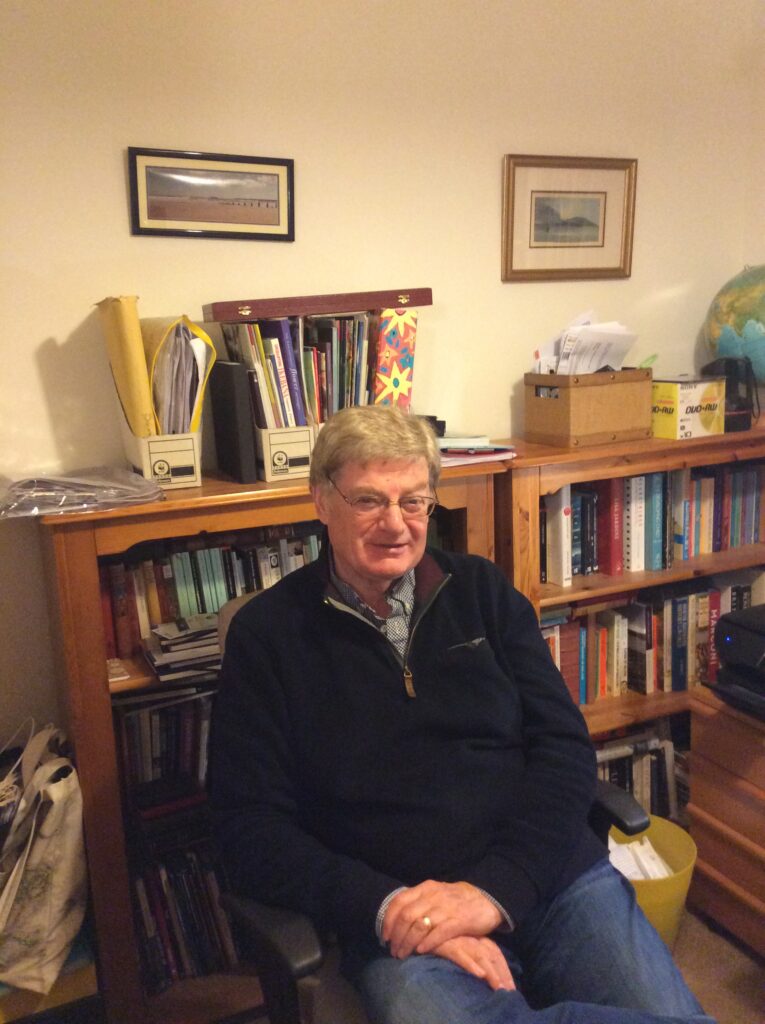7 March 2024
Looking on the Bright Side
by Paul Branch

Sad news indeed about Eric Idle, Monty Pythoneer par excellence now apparently languishing in octogenarian penury and still having to work in order to put his financial affairs in order. Amongst many comedy masterpieces he penned the classic funeral ode “Always Look on the Bright Side of Life”, and despite his monetary woes his optimistic exhortation couldn’t be more appropriate, having just had successful surgery for pancreatic cancer. Thankfully he can now continue living happily if busily in Las Vegas having postponed the drawing of his terminal breath. But Eric’s is not the only good news story deserving a mention as a means of deflecting attention from other matters.
You could be forgiven though for thinking things couldn’t get any worse: the Middle East, Ukraine, Biden vs Trump, rising prices, strikes, the Post Office scandal …. It does make you wonder what else could possibly go wrong. And then climate change rears its ugly head, showing no sign of abating. If anything the winters are getting wetter and windier, the ice shelves are disappearing, and we ponder with some trepidation what level of searing temperatures to expect in the summer.
Last year across the world we consistently exceeded the 1.5C global warming target, that hallowed long-term objective for trying to ensure civilization’s continued existence on this planet. Despite this bit of horrendous news, our apparent government-in-waiting has abandoned its flagship £28 billion policy commitment on the grounds that such an investment in a green economy and the attainment of climate targets could be a bit reckless. Its opponents wail that taxes would need to rise, the country can’t afford it. This presupposes that the holy grail of minimum taxation is preferable to global extinction, and again ignores pleas for the third year running from a group of eye-wateringly wealthy billionaires to please, please tax us more …. they can afford it, they’re more than willing to do it, and it would really help.
It’s estimated that across the G20 group of countries such generous folk could contribute over £1 trillion a year from a trifling super-rich wealth tax levy. Again they have been rebuffed by world leaders, this piece of tremendously helpful good news has been spurned …. but frankly it’s hard to understand why the British contingent at least don’t just each send Rishi a cheque (or he could write one himself), a donation for the Treasury to spend how it wishes. But maybe that’s too easy. And to some extent the shocking news about the world’s temperature actually having risen by 1.5C should act as a spur to world leaders to start taking the situation more seriously and giving it the attention (and funding) it deserves. But maybe that’s way too optimistic.
However, Spring is now definitely on its way, and what’s more England gained a hugely unlikely Test match triumph in India. So maybe, just maybe there’s reason to put on a happy smile of optimism (set to one side subsequent cricketing disasters on the sub-continent) and see if there’s other good news to consider. And my goodness there is, if you dig deep enough: on climate change there are encouragingly rapid developments in renewable energy and in sustainable agriculture …. hurrah!!
A particular source of climate change is the food we eat: the methane gas emitted by farm animals, and the use of land and water to sustain the meat industry. Scientists working on cellular cultivated agriculture recently produced something completely different — a mammoth meatball. Using a DNA sequence derived from the frozen remains of the flesh of a prehistoric woolly mammoth, bioengineers at the University of Queensland have created mammoth muscle protein, filled in a few gaps with elephant DNA and added sheep stem cells to grow enough replicated cells within a couple of weeks to produce mammoth meat. As a way of drawing attention to the potential of cultivated meat to eventually replace the natural variety, the stunt seems to have worked. A woolly mammoth was chosen because of its symbolism – a creature driven to extinction by hunting and by world warming after the last Ice Age. Initially the objective was to produce dodo meat, but sadly the necessary DNA sequences no longer exist.
It’s not so much the type of meat that’s significant of course, more the fact that cellular agriculture (or lab-grown meat) is feasible, offering the possibility of a source of far more sustainable food than traditional animal farming. The advantages would be significant: reduced spread of disease requiring fewer antibiotics, and unlocking vast tracts of land for rewilding back to nature. Overuse of antibiotics contribute to increased resistance, such that the UN reckons by 2050 antibiotic resistance will be a bigger health problem worldwide than cancer. Once production of lab-grown meat is scaled up, it could take only 1% of today’s land use to satisfy the current level of demand for agricultural meat, plus of course a significant upheaval in the world’s eating habits, and provided the production processes themselves don’t add to atmospheric pollution.
If you’d like to get a taste of the future of fast food then the mammothburger meatball can be viewed at Amsterdam’s Nemo science museum. The actual taste is thought to be fairly bland, a bit lamby, lacking seasoning and probably in need of an accompanying generous helping of fries and ketchup. Elsewhere there is already lab-grown Japanese quail approved for sale to customers in Singapore, so the world really is changing.
In Britain last year, electricity generated from solar, wind and hydro power overtook that from fossil fuels for the first time. There are huge wind turbines being erected in the North Sea, standing a quarter of a kilometre above the waves, nearly as high as the Shard with each blade longer than Westminster’s Big Ben clock tower is tall. The energy extracted from the wind by each rotation of such massive blades can power an average home for two days. There are obviously practical and cost problems of maintenance and transportation, but these are not insuperable and clearly worth resolving in view of the enormous benefits.
In other, sunnier parts of the world the real game-changer is solar power. The material used to produce silicon cells for solar panels is becoming scarce and more expensive, but research on a far more abundant and cheaper source of material in encouraging. At the University of Swansea a rollable and fully printable solar cell array has been made from perovskite, a calcium titanium oxide mineral much less expensive than silicon but still in need of development to move the concept from the laboratory to efficient factory production. Similar work is ongoing in Oxford and by Panasonic in Japan where the objective is to fit cheap solar arrays into windows and on walls. Again there will be considerable costs needed for the large-scale development of perovskite, or perhaps some other photovoltaic technology, into a real-world solar solution, but the benefits to mankind will be worth it.
In conclusion, and in the style of Monty Python’s “Life of Brian”:
Never look on the dark side of life.
Don’t despair at all that trouble and strife.
Eat less meat for dinner, it’s got to be a winner.
Wind and sun are there to help you sing.
It’s a funny old place, so wear a happy face.
Raise a smile and whistle, that’s the thing.
So always look on the bright side of life.
Tile image: by Hitesh Choudhary on Unsplash


